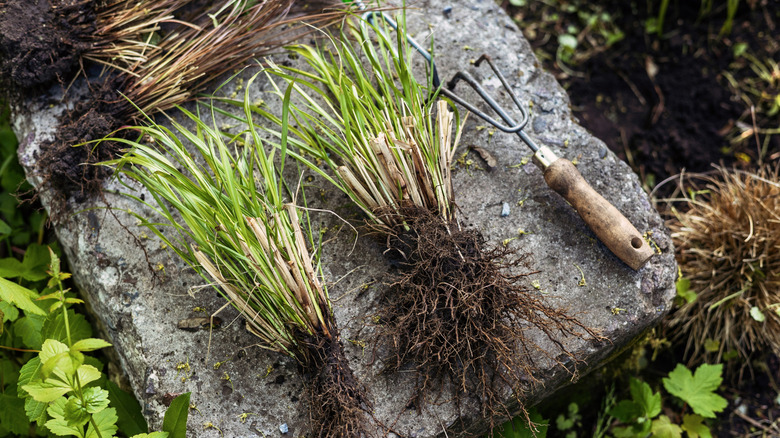Garden Smart And Save With A Nifty BOGO Perennial Shopping Solution
Have you been dreaming of cultivating a lush garden with beautiful perennials that come back year after year? Since perennials can take a while to flourish, some gardeners like to skip the seed-starting process by purchasing an established perennial from the store. It's a great way to jump-start your garden, even if it costs a few extra dollars. The downside, it seems, is that you're only able to get one plant per pot. However, many people don't know that it's possible to get more than one perennial from a single nursery plant. There are a variety of perennials that can be divided immediately to cultivate multiple plants, so it's a buy-one-get-one-free value in one pot! You just have to know which perennials can be divided and how to divide perennials properly.
Many perennials perform best when divided. Fountain grass, irises, and ground cover plants like lamb's ear need to be divided to thrive, and they're easy to find at nurseries. Commercial nurseries typically sell mature perennials between 1 and 5 years old. While the clearest sign that a perennial needs division occurs at the root level, for flowering perennials, plants may have dead spots with weaker blooms or none at all. The center of the plant might be discolored and withering, a clear indication that the plant needs more space.
When you spot those signs, grab the plants to get more coverage in your landscape. This BOGO hack is a great way to create a perennial border in your garden or fill in the bare spots in your landscaped areas, since certain perennials like ornamental grasses can be divided into multiple sections. It's also a good way to ensure a more vigorous bloom in the future and control the size of plants.
When and how to divide perennials
Every perennial is different, so researching the best ways to divide the specific species you have will give you the best results. Note that there are some perennials that should not be divided, like butterflyweed, lavender, and goat's beard, so make sure you understand your plant's care instructions beforehand. A good rule of thumb is that spring and summer blooming perennials should be divided in the fall, and fall-blooming plants should be divided in the spring. This is the least stressful approach for the plants because it allows them time to recover from being repotted without expending extra energy on new blooms.
Water the plants up to two days before splitting to ensure the plant is easier to work with. Look for clear areas of separation as a guideline for division, if possible. You can gently separate the roots by hand or use a sharp spade to divide the plants, depending on the root type. Plants with clumping root systems have thick, fleshy roots that need to be cut through the crown. You should ensure there is at least one bud per divided plant. Plants with this root type include daylilies and ornamental grasses.
Plants with spreading root systems have slender, matted roots that can be pulled apart by hand or forcefully separated with digging forks for thicker root clumps. Divide these plants into three to five shoots, discarding the weaker portions. Rhizome root systems are stems that grow above or near the topsoil. These should be divided with a few inches of rhizome and a fan of leaves on each division.

